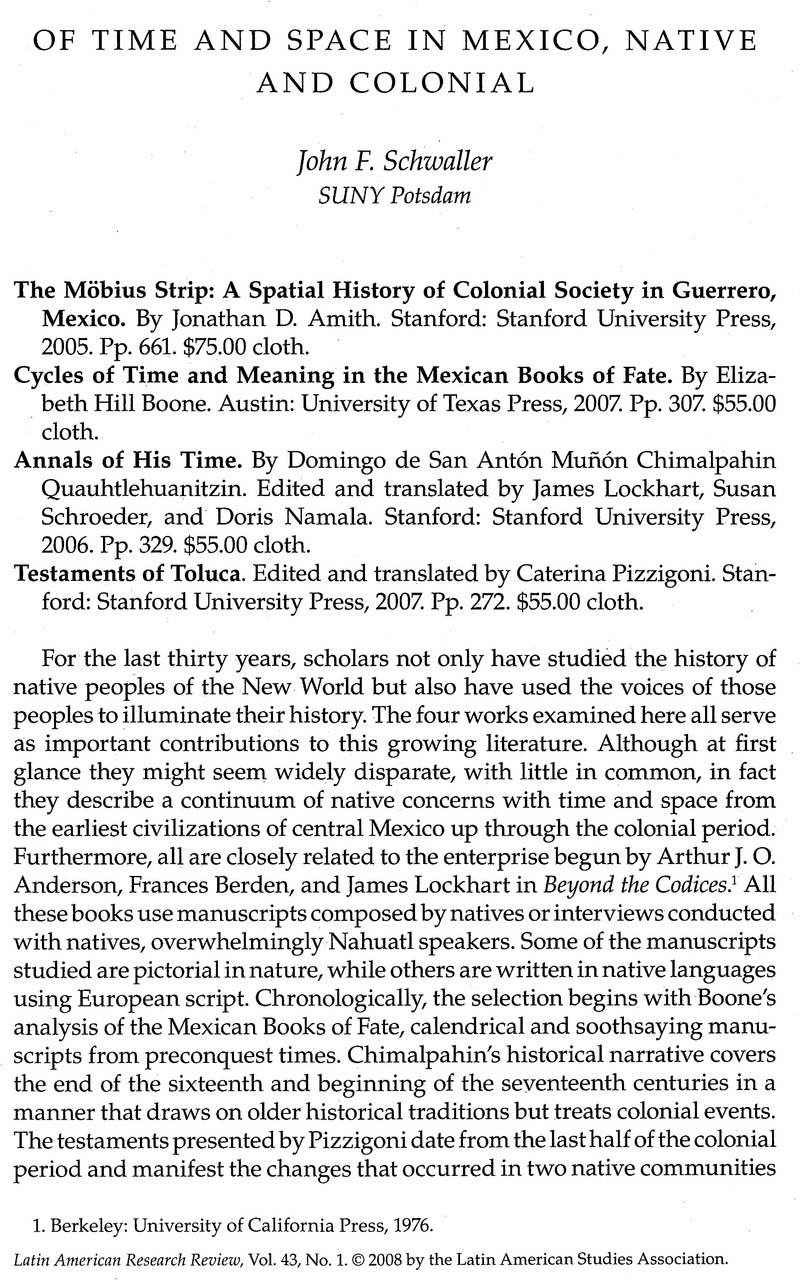No CrossRef data available.
Article contents
Of Time and Space in Mexico, Native and Colonial
Review products
Published online by Cambridge University Press: 05 September 2022
Abstract

- Type
- Review Essays
- Information
- Copyright
- Copyright © 2008 by the University of Texas Press
References
1. Berkeley: University of California Press, 1976.
2. Each xihuitl year received its name from the tonalpohualli day upon which it started. This could be Rabbit, Reed, Flint or House, numbered 1 through 13. The 52-year cycle began with 1 Rabbit, followed by 2 Reed, 3 Flint, 4 House, and 5 Rabbit.
3. Eduard Seler, Codex Borgia. Eine almexikanische Bilderschrift der Bibliotek der Congregatio de Propaganda Fide, 3 vols. (Berlin: Druck von Gebr. Unger, 1904–1909); Karl Anton Nowotny, Tlacuilolli. Style and Contents of the Mexican Pictorial Manuscripts with a Catalogue of the Borgia Group, translated and edited by George A. Everett Jr. and Edward B. Sisson (Norman: University of Oklahoma Press, 2005)..
4. This work has been edited by Frances F. Berdan and Patricia Reiff Anawalt, 4 vols. (Berkeley: University of California Press, 1992).
5. James Lockhart, The Nahuas After the Conquest: A Social and Cultural History of the Indians of Central Mexico, Sixteenth Through Eighteenth Centuries (Stanford: Stanford University Press, 1992), 261–325.
6. S. L. Cline and Miguel León Portilla, The Testaments of Culhuacan (Los Angeles: UCLA Latin American Center, 1984); Teresa Rojas Rabiela, Elsa Leticia Rea López, and Constantino Medina Lima, Vidas y bienes olvidados: Testamentos indígenas novohispanos, 4 vols. (Mexico: CIESAS, 1999–2002). See also Susan Schroeder and Matthew Restall, Dead Giveaways: Indigenous Testaments of Colonial Mesoamerica and the Andes (Salt Lake City: University of Utah Press, 1998).
7. Congregación was also known as reducción. This was a system used after the worst periods of native population decline, whereby native peoples were moved from far-flung villages into more centralized places. Composición allowed landowners to gain legal title to lands that had merely been occupied and not legally acquired.
8. The designer of the dust cover should nevertheless be soundly criticized. Although Amith's book is unabashedly about Guerrero in central Mexico, the cover includes a Möbius strip made up of a map of the coast of Peru!
9. In fact, Pizzigoni learned Nahuatl from Amith.


